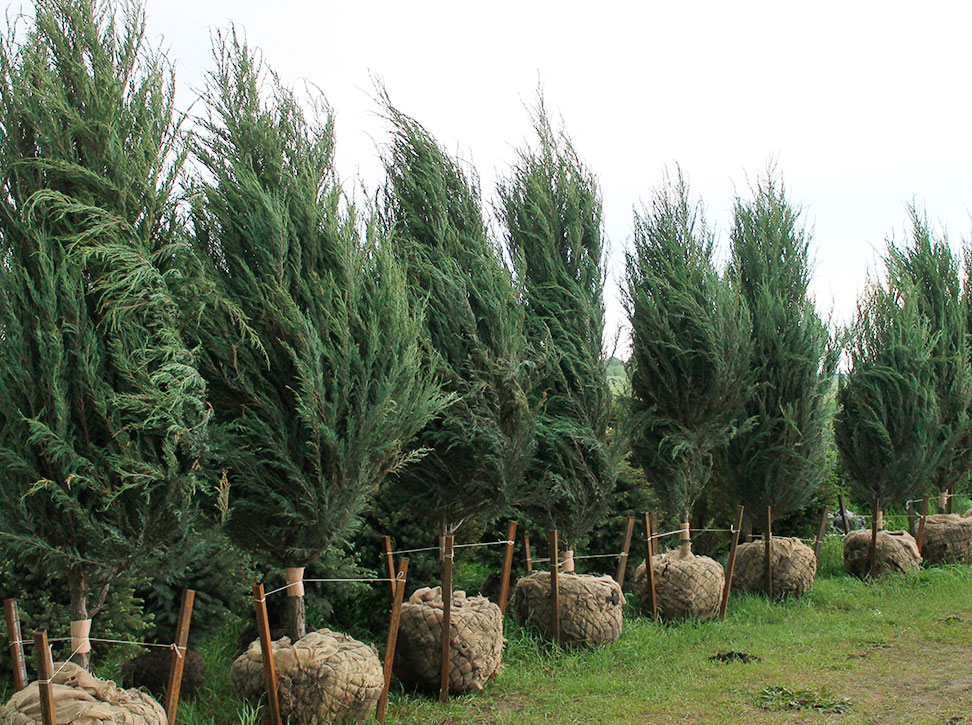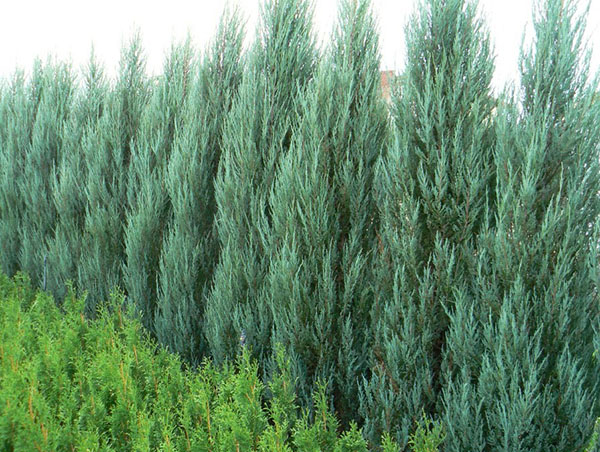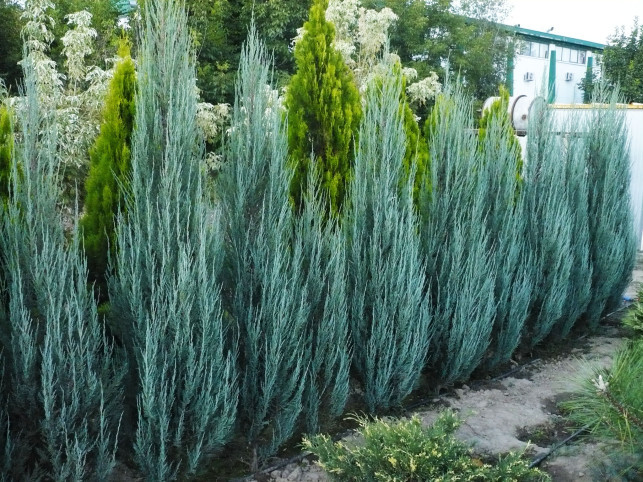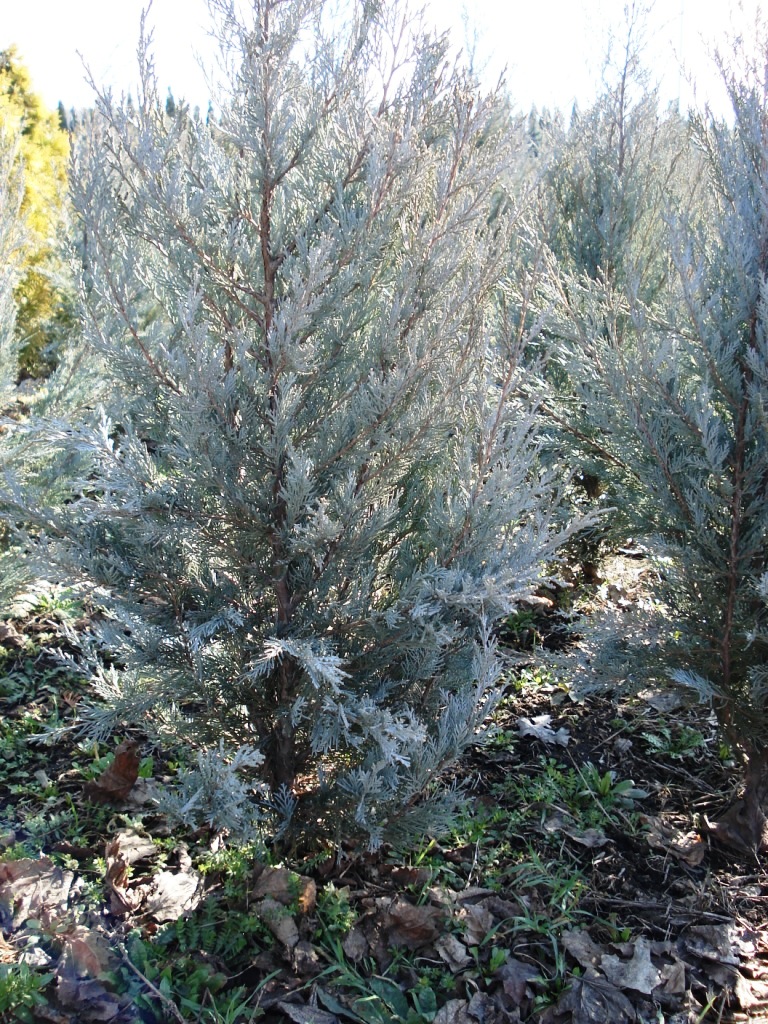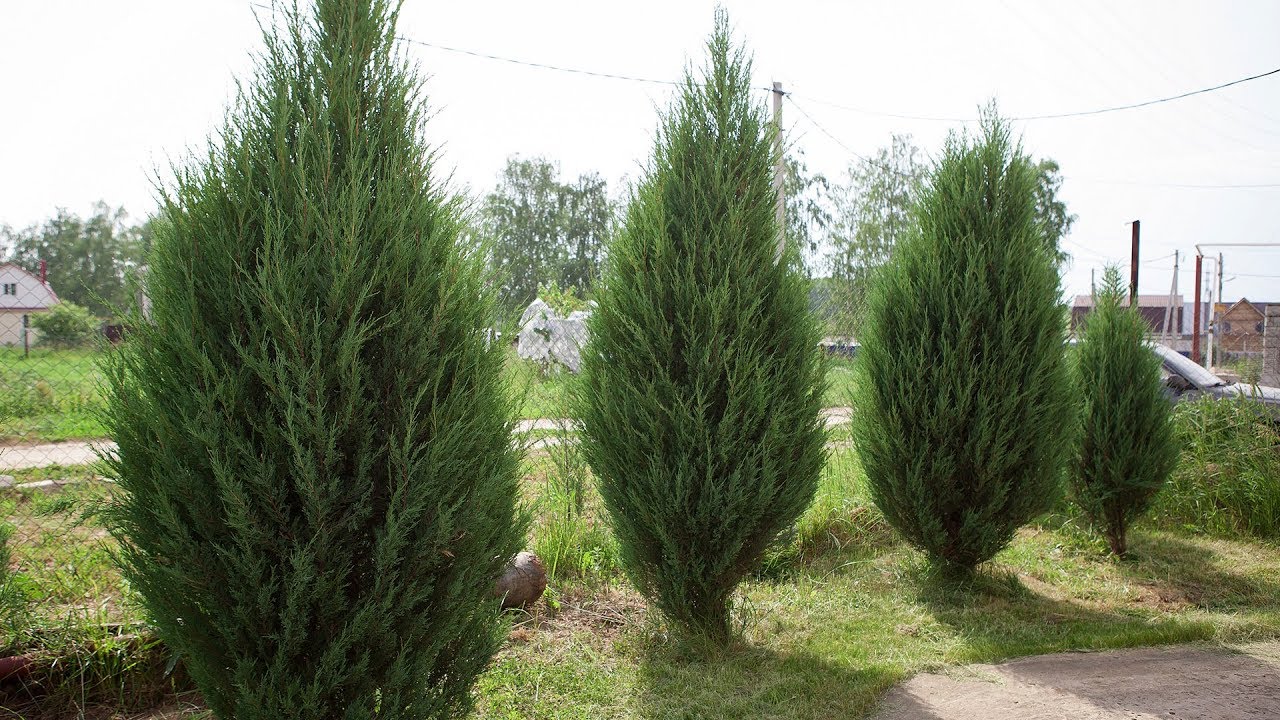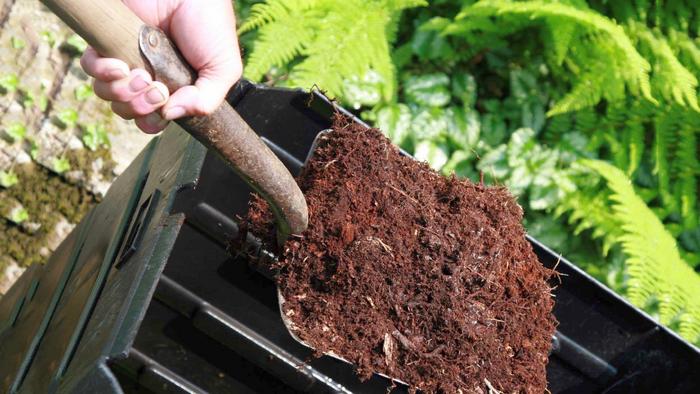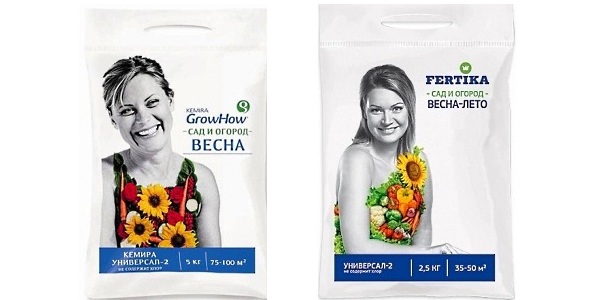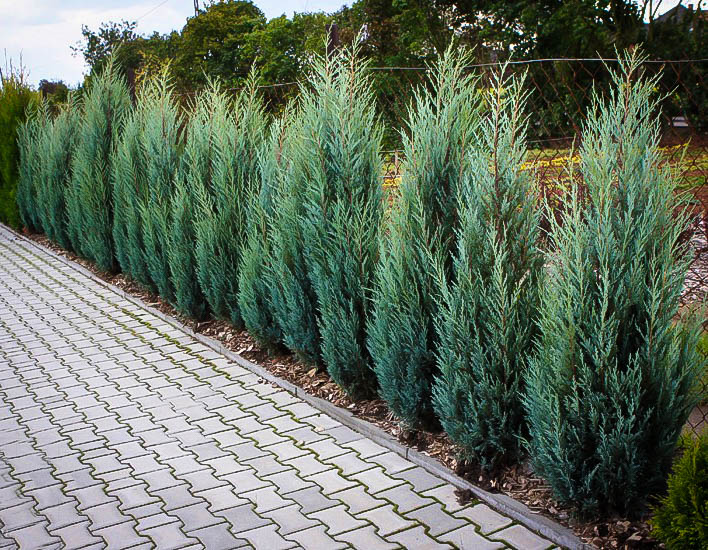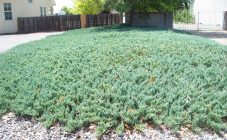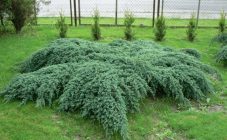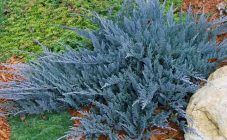Content:
Many gardening enthusiasts know what a rocky juniper is. This small shrub is often used to decorate areas. It can often be found in squares and parks, near the administrative buildings of the region. For landscape design today, many varieties of culture have been bred, which this article talks about.
About culture
The evergreen coniferous shrub is called rocky juniper. The culture belongs to the Juniper family, from the Cypress genus. The place of growth is considered to be the highlands of North America, with a height of 1.5 to 2.7 meters above sea level.
Some species are found in Canada, British Columbia, southwestern Alberta, the United States, and northern Mexico.
The plant is distinguished by the duration of development and life, special specimens exist for more than a thousand years.
It has been known as a decorative culture since 1839. In Russia, rocky juniper has been actively cultivated since the 60s of the last century. The first step was to start growing crops for agricultural purposes. The juniper type of wood was prized for its strength and durability. The making of the first household items from this material was noticed in North America, by the first Indian settlements. Such items in everyday life were distinguished by the duration of use, pleasant color and aroma.
Description of culture
The culture is shrubs and dioecious trees. At home, in nature, such plants can reach 18 meters in height, with a trunk girth of 0.8 to 2 meters. Garden species are smaller in size. Starting from the base, a crown of irregular conical shape grows, which gradually rounds off.
An excellent feature of the plant is the reddish-brown color of the bark and the pale blue color of young stems. The foliage is oppositely located with an ovoid-rhombic plate, often resembling scales, the length of which is no more than 0.2 cm, diameter - 0.1 cm. The color of the foliage can vary from dark green to gray-blue.
The fruits are distinguished by an interesting spherical shape of dark blue color with a characteristic bluish coniferous bloom. The length can vary from 0.4 to 0.6 cm. The first fruit ripening occurs only towards the end of the second year after planting. Inside, the cone hides a seed, brown-red in color, no more than 50 mm in diameter.
The best varieties
As a result of selection, the world knows more than one variety of culture, they are gradually gaining the confidence of gardeners. American breeders have developed the following popular varieties today, which are planted in mid-latitudes:
- Juniper rocky Blue Air. The height of the plant can vary from 150 to 250 cm. A feature is considered to be a narrow, columnar crown, no more than 50 centimeters wide. Needles are needle-shaped, green-blue, scaly with a metallic sheen;
- Blue Haven - low bushes, 0.2 meters high.They have a pyramidal crown, the width of which is 0.1 m. The color of the plant is light blue all year round;
- Blue Sky juniper is one of the few winter-hardy species, reaching 6 meters in height at 10 years of age. It features a narrow and slender trunk and straight, adjacent stems. The needles, like other species, are scaly, green-gray in color. Most susceptible to attack by fungal infections;
- Moffat Blue. The difference between the variety is winter hardiness. Dense wide crown of a pyramidal shape. The needles are greenish blue. The maximum height is 6 meters, with a crown width of 130 cm. Does not like excess moisture, which makes it impossible to grow the variety in regions with high humidity;
- Munglow is similar to Blue Haven in many ways. The only difference is the blue-silver color of the needles, which becomes even brighter in winter;
- Silver King. A bush with wide spreading branches. At the age of 10, it reaches 60 cm in height, with a crown width of up to 2 meters. Like everyone else, the needles are scaly, blue in color;
- Table Top Blue - has a characteristic oval crown, with a blue-silver color. After ten years from the date of planting, the plant has compact dimensions: 2 m in height with a crown span of up to 2.5 meters;
- Wichita Blue. It has open branches, the maximum width of which is 150 cm, with a height of 40 cm for a 10-year-old tree. The color is silver-blue.
In addition to the species described above, others are also used in gardening: the juniper Fisht, Green, Erecta, Medora, Gray Glim, etc.
Features of agricultural technology
Landing
Bushes with a closed root system can be planted all year round. Planting seedlings with open roots in open ground is carried out exclusively after the arrival of spring and sufficient heating of the soil, without waiting for the start of sap flow. Subject to the rules of agricultural technology, caring for the tree will not be difficult.
When choosing a planting site, you need to prefer a sunny open space. Care should be taken that the distance to the groundwater is at least about 10 meters. For low-growing varieties, you need to choose poor soils, otherwise the dwarf property will remain aside. Full-fledged species are grown in nutrient soil in open areas.
First of all, the bottom of the pit is covered with a drainage layer, its thickness should be at least 20 cm. You can use broken stones, bricks or rubble. Next, a bush is lowered into the planting hole, filling everything with a mixture of peat, turf soil and sand (proportion 2: 1: 1). Now the freshly planted bush needs to be watered abundantly, wait until the moisture is completely absorbed.
The mulch layer should be at least 8 centimeters long and consist of peat, wood chips, sawdust or pine bark. When planting a tree, you need to pay attention so that the root collar after planting is flush with the ground.
Care
In the greater mass, the rock is valued precisely for its unpretentiousness. It should be understood that, regardless of the provided care, the growth of the tree slows down in the first years. For full development, a newly planted juniper is watered several times a month, provided there is no natural rainfall. Additionally, it is recommended to spray the bushes with warm water, exclusively in the evening.Adult representatives are watered only during periods of drought, while they can be moistened no more than several times per season.
It is strictly forbidden to use organic fertilizers for feeding the juniper. Young trees need only one top dressing, carried out during the transition period from April to May. For 1 bucket of water, 20 grams of Kemir-wagon is used, or nitroammophos is added at the rate of 30-40 grams per square meter. Plants that have taken root do not need fertilization.
The need for care in winter may be due to the peculiarity of the variety. For columnar trees, it may be necessary to crush snow off the branches to keep them from being damaged by weight. Also in autumn, you can pull off the branches, pressing them to the trunk so that the crowns do not burst from heavy snowfalls.
Diseases and pests
Most of all, conifers suffer from fungal infections. Diseases and pests from which juniper suffers:
- Rust is a fungus that manifests itself as growths of a rich orange color. To combat it, the affected areas are cut off and treated with any fungicide;
- Tracheomycosis (fusarium wilting) is a disease of the root system associated with waterlogging of the soil. It is recommended to replace the top layer with fresh earth, cut off the affected parts, spray the soil surface under the top layer with fungicides against fungal infections;
- Drying of branches - needles begin to die off, turn yellow, small fruit mushrooms begin to cover the trunk. For treatment, the affected branches and other areas are removed, all trees are treated with fungicides.
Landscape
A poorly spread culture gradually gained popularity. Today, rocky juniper is actively used in the creation of design compositions on private estates and public areas. Such bushes help to create recreation areas as close as possible to natural conditions. Various varieties look great without additional landscape design elements and can be combined with other plants.
The most popular Munglow juniper in landscape design, due to its compact size and interesting color. The plant looks especially impressive in winter, when its color against a snowy background becomes even brighter. The popularity of the rock in the landscape is due not only to its ease of care and maintenance, but also to its unusual geometric shapes. Often, juniper becomes a beneficial backdrop for other plantings, complementing various design compositions. The culture is great for landscaping a Japanese-inspired garden and for decorating large alpine slides.
The crown of the rocky juniper is quite effective due to the fact that it is geometrically correct and clear. It is often used as a background for other plants or as a central link in a garden composition. This plant is perfect for those plots that are decorated in English or Scandinavian style, and the juniper will also look great in alpine or Japanese gardens.
